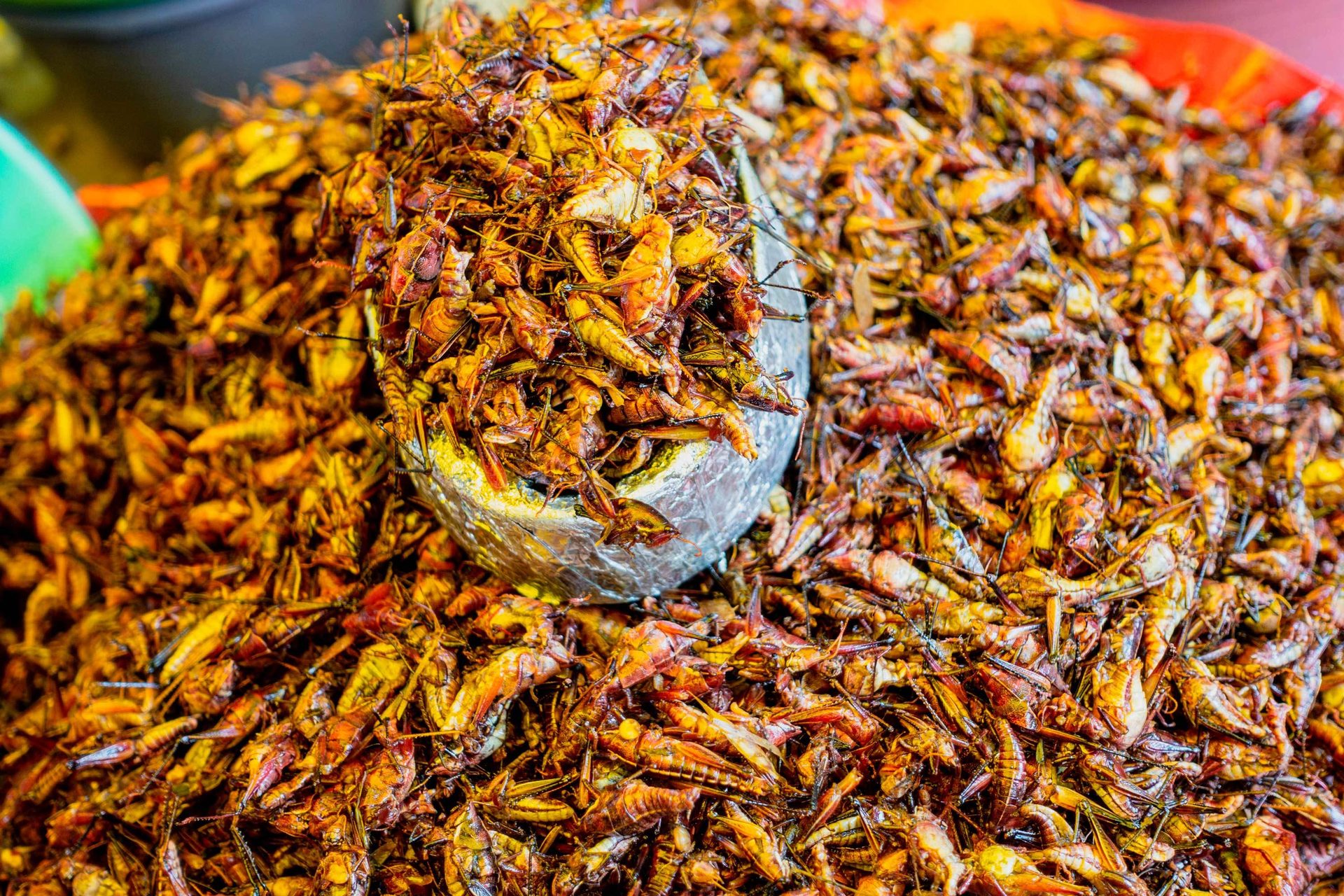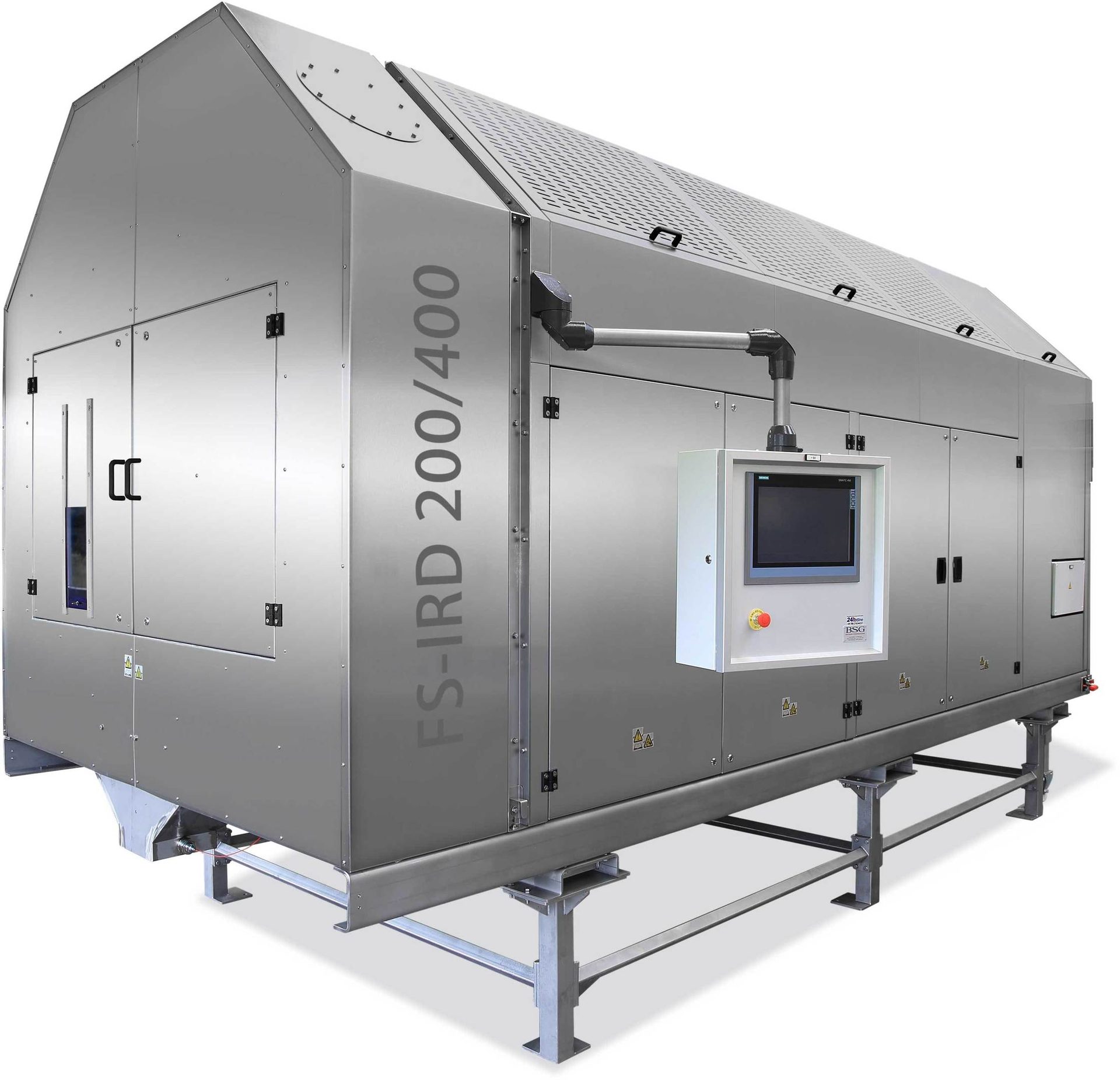ADVERTORIAL
Kreyenborg FoodSafety-IRD – Sterilization, Drying and Roasting of Edible Insects

The increasing world population, and along with it more and more demanding consumers, will consequently require a significant overall increase in food production. Besides the most widespread sources of proteins - livestock and fish - insects are now seen as having high potential in becoming an important resource to balance and serve the increasing worldwide demand in food and feed.
Consumption of insects offers a wide variety of sustainable and environmentally friendly benefits when compared with traditional food-protein production. Among these are high feed-conversion efficiency, less greenhouse gas emission, less water consumption, and less land usage.
Apart from their utility in animal feeding, edible insects, such as mealworms, grasshoppers, crickets, and buffalo worms are recognized as viable substitutes for conventional meats as a food source for human consumption.
In light of the limited availability of wild insect populations and the enormous pressure put on the environment due to the unrestrained harvesting of them from nature, production of edible insects requires a shift, both at the small-scale level, and in large industrial farming facilities.
In converting farm-fresh insects to high-value food sources, very gentle processing is required to preserve organoleptic properties and nutrient content. Furthermore, focus on the natural bioburden of microorganisms is needed to establish a high food safety standard when using sterilization technologies.
Food Safety is a crucially important issue in the food industry. The EU repeatedly reports product recalls due to salmonella-contaminated food and feed, which must therefore be subjected to thorough treatments and to inspections to ensure that they are safe for consumption. Thermal processes are commonly used in the food industry to reliably kill microorganisms. When selecting the appropriate process, however, it is important to consider the effects of heat on the stability of the product to be treated.
With their patented FoodSafety-IRD (Infrared Rotary Drum), the German company Kreyenborg, which specializes in bulk-solids, offers system components that in addition to drying and roasting insects can sterilize and pasteurize bulk food or feed with greater care. Microorganisms such as salmonellae, E. coli, enterobacteria, mould or yeast fungi are killed reliably and the shelf- and storage life of the products are thus prolonged. Germ reduction achieved by the FoodSafety-IRD corresponds to a Log5 validation.
The advantage of the FoodSafety-IRD lies in the operating principle of infrared light, conducting energy directly into the product core, heating the material gently and efficiently from the inside, outwards. This is unlike other thermal processes, such as hot air dryers, which require hours to heat the product, and does it in reverse - from outside to inside. The FoodSafety-IRD heats the product core in a matter of minutes, resulting in significantly shorter dwell-times in drying and final sterilization.
The bulk insects or other bulk materials are continuously conveyed into the rotary drum by means of a feeding unit. The product is transported from the inlet through the rotary drum to the outlet via a welded-in helix conveyor and is constantly mixed by the rotational movement, which insures a homogeneous drying level and avoids any dead spots or caking agglomerates.

The decisive factor for a highly homogeneous product appearance is this constant rotation and movement. In standard belt-dryers, for example, the product remains in one place for a longer period of time; this can lead to uneven nests forming that promote mould growth or insufficient drying. By contrast, the constant rotational movement inside the FS-IRD dries the material evenly. This gentle process preserves the color, flavor, and consistency of the product, as well as the valuable ingredients, such as proteins.
The FoodSafety-IRD has four temperature zones which can be set independently according to particular product specification, and which adjust themselves automatically, based on the recipe stored in the control system. The product temperature remains constant, and overheating is thus avoided. Depending on the desired process, the appropriate product temperature and dwell-time must be selected. In the case of insect processing this would entail mainly drying and sterilization, but roasting or coating, as well as adding seasonings or additives, is also possible. Temperatures of 65 to 200 degrees Celsius and above can be achieved in the FS-IRD.
Kreyenborg supplies the FoodSafety-IRD as a plant component for its customers, but also offers turn-key solutions. Sterilization and pasteurization usually involve stand-alone solutions, requiring the necessary equipment, i.e. upstream and downstream conveyor technology, product cooling and big-bag handling (filling and emptying). Drying, on the other hand, usually entails an integrated solution with up- and downstream process steps as required by the customer, such as with blanching, washing, or packing.
The infrared system is individually designed after a determination of the technical requirements. Not least in insect processing, microbiology is relevant, because a microbiological protocol is required corresponding to which impurities the product contains. Other factors include the size of the product, the bulk density, the input and output moisture, and perhaps whether the product has a high-value ingredient that is thermally sensitive.
In the case of specific requests, where requirements involve particular temperature regulation from the FoodSafety-IRD, new solutions are sought. In collaboration with their customers, Kreyenborg often carries out trials with modified temperatures and dwell-times and then has laboratories evaluate the effects of these adjustments on the product - in this case on the valuable protein.
The conventional process for sterilization and pasteurization of feed or foodstuffs is the common steam process. Saturated steam is applied to the respective product. For the process to be effective here, higher temperatures are involved, but these in turn have a greater impact on the product’s properties. The product is thus affected: the color changes, ingredients volatilize, and the overall appearance and consistency deteriorate. With the infrared process, on the other hand, product properties remain nearly unaffected. Further, infrared is a natural application that does not use gases or chemicals commonly used in other treatment processes to eliminate microorganisms.
Another positive aspect of infrared light is its significantly higher efficiency due to direct energy input. Compared with a hot-air roaster, for example, which is operated with gas and has higher CO2 emissions due to combustion, the infrared rotary drum can be operated carbon neutrally with renewably generated electricity.
The time needed for cleaning after each product change is considerably reduced due to fast, easy access to the rotary drum, and down-times throughout the entire plant are thus reduced. Besides various species among edible insects, numerous products in various forms from a wide range of food sectors, such as nuts, seeds, herbs, spices, vegetables, and many others, can be processed. The focus is on the product, and the FS-IRD is set up according to that product’s specific requirements.
First, trials to develop the appropriate treatment are carried out in the in-house R&D center of Kreyenborg in Germany, checking temperatures, times and product properties and then setting the right parameters in consultation with the customer.
At the end of the day, customers must be convinced that the innovative FS-IRD is the best and most efficient technology, adding value to quality products and ensuring high food safety standards.
For more information: food@kreyenborg.com
